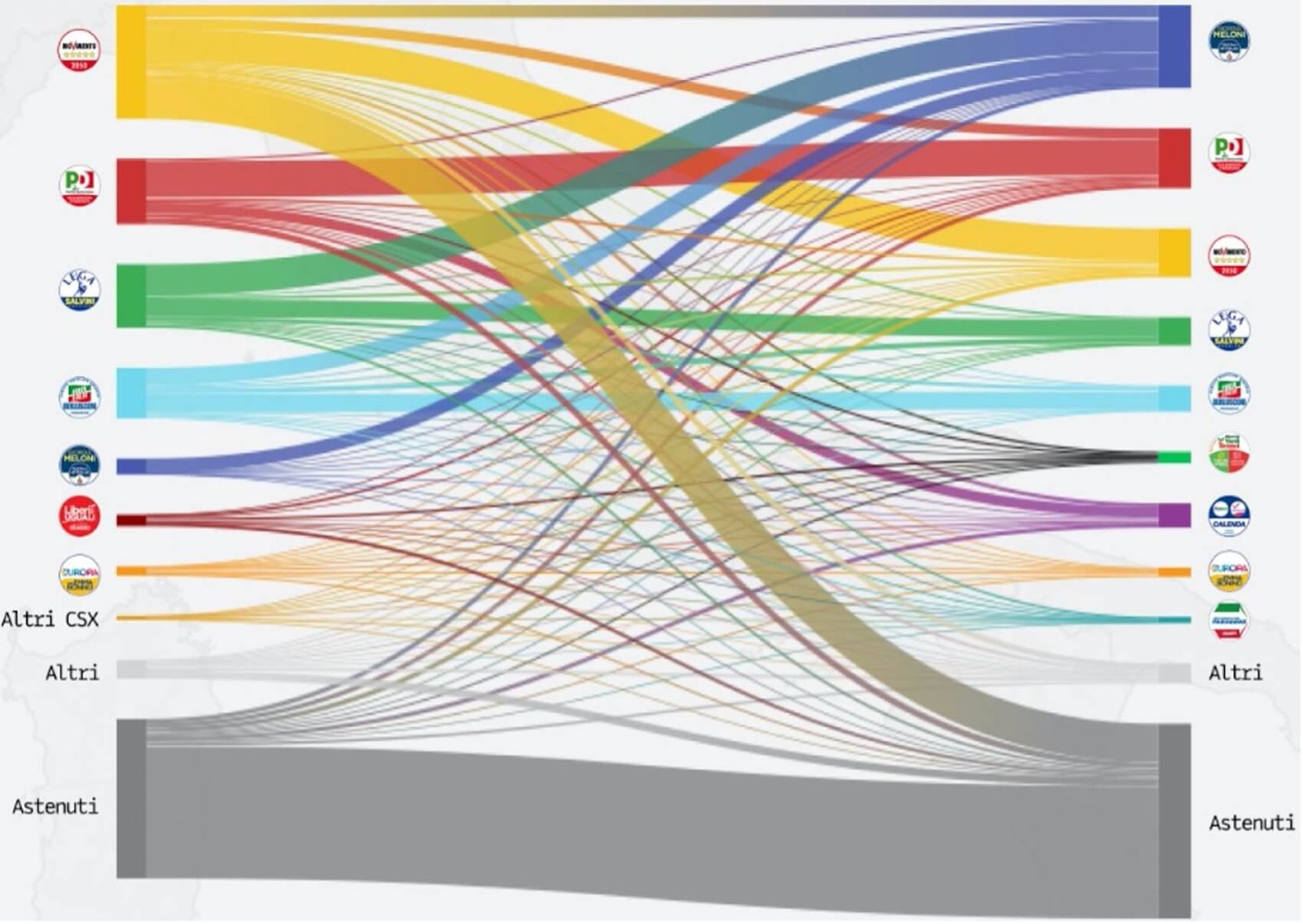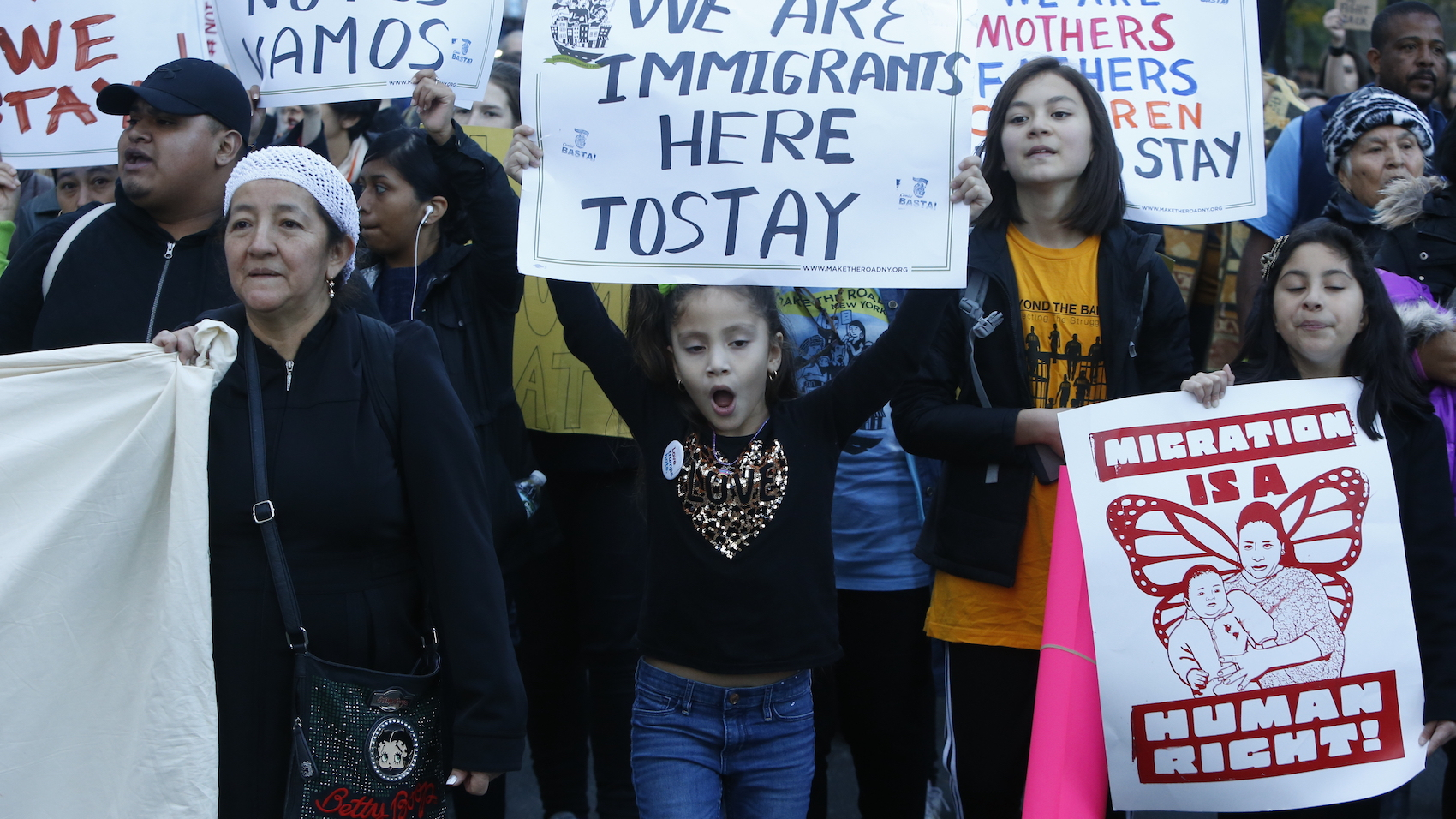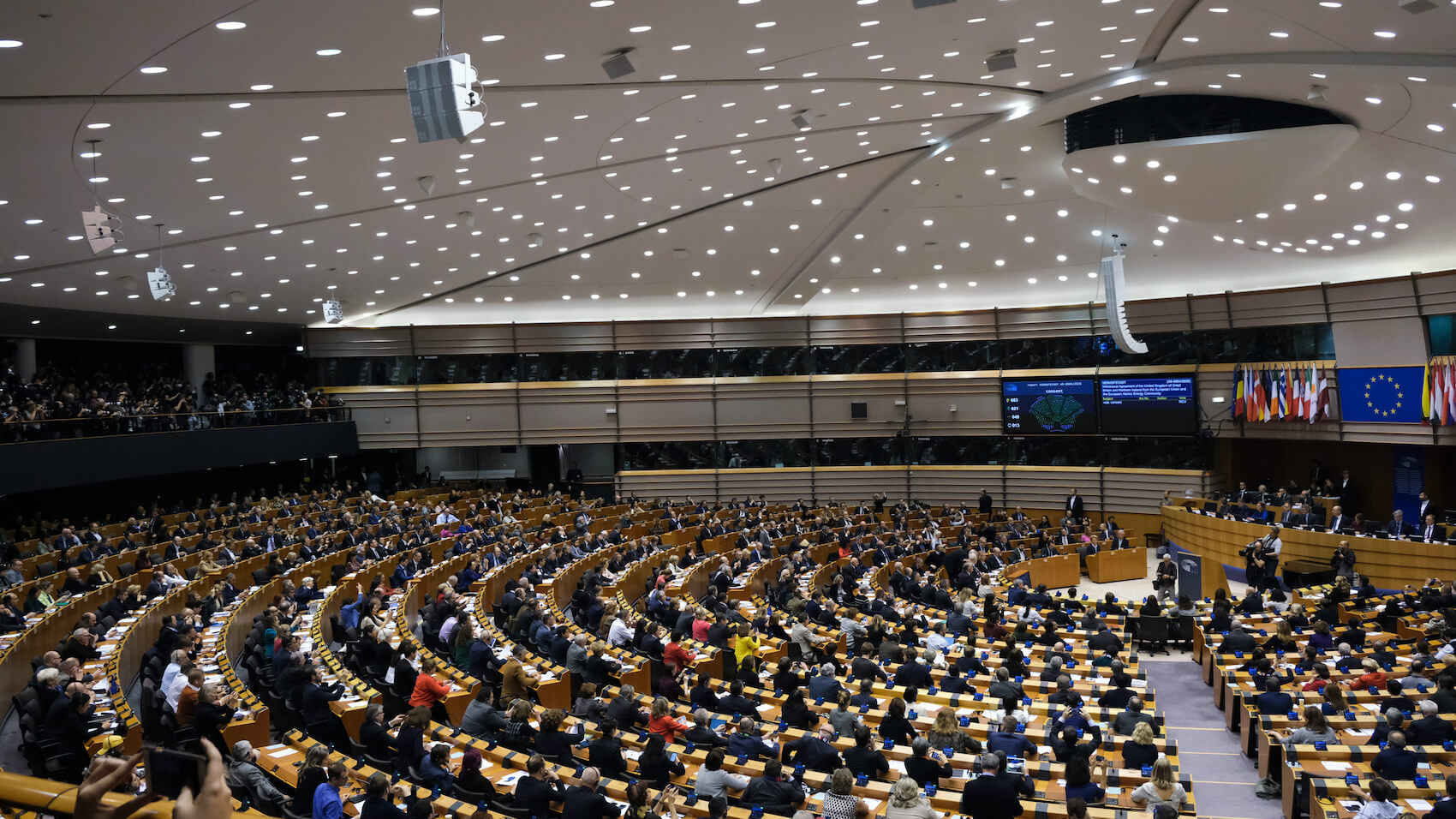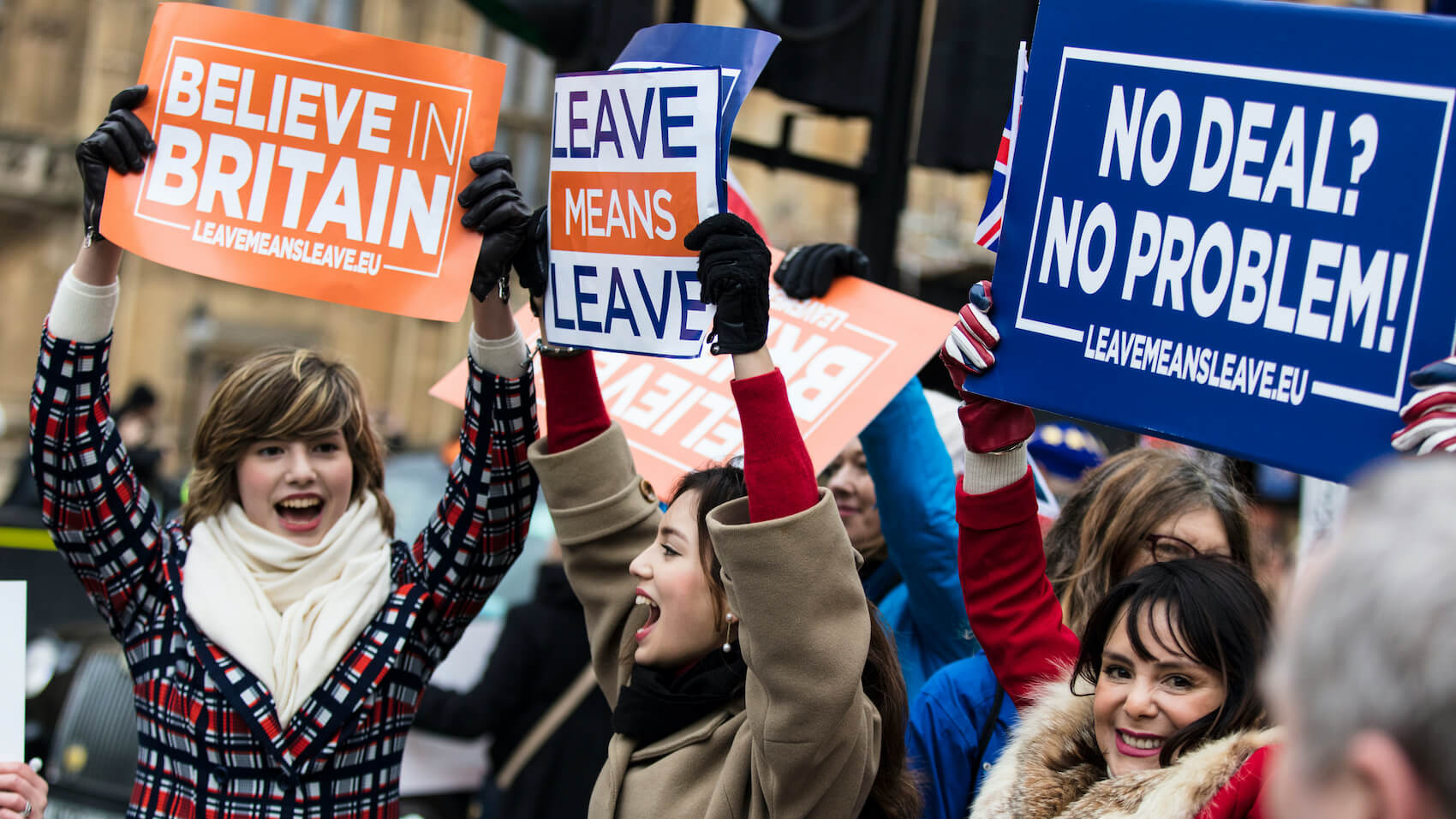Traditionally, caste and religion have been the two most prominent cleavages in India. Before 2014, upper-caste people used to identify strongly with the ideology of Hindu nationalism. However, the rise of Hindu nationalism (Hindutva) and the socio-political mobilization of lower caste people happened during the same period, post-2014, and both received massive public support. It is no longer possible to separate populism from caste, religion, and democracy. Therefore, as Rahul Mukherji noted, Indian democracy is more about populism rather than welfare.
By Saurabh Raj*
One of the historic grounds in the world’s largest democracy and the traditional host of the Jay Prakash (JP) movement[1]—Gandhi maidan, Patna (state capital of Bihar, India)—was full of saffron flags and caps during the 2019 parliamentary elections. A 23-year-old young man who was holding a Bharatiya Janata Party (BJP) flag and had a locket of the Hindu lord Krishna around his neck was shouting, “Modi-Modi-Modi & Jai Shri Ram.”[2] India’s prime minister and the most popular leader Narendra Modi was just about to come on stage. This young man looked impossibly excited to see Modi for the first time. The name of this young boy was Rakesh Yadav (his first name has been changed). Yadav belonged to the “Yadav caste”—socially and politically one of the most influential and historically disadvantaged[3] castes in Bihar.
Being a Yadav and cheering for Modi tells a lot about the shift happening in the socio-political landscape in India: this caste used to be traditional voters for their caste group leader, like Lalu Yadav. Any political scientist would have been surprised to see that many youths like Rakesh Yadav from the Yadav caste would have shifted their political leaning towards Bharatiya Janata Party (BJP) from the Rashtriya Janta Dal (RJD). Like any curious and politically active citizen, I asked Rakesh Yadav, “Why are you here? I mean shouldn’t you be at Tejasvi Yadav’s (the son of Lalu Yadav) rally?” He bluntly told me, “Bhaiya jaat-paat bahut dekh liye, ab desh aur dharam dekhna hai”—I am done with caste politics and now it’s time to focus on my religion.
His prompt answer was a surprise: caste has always been an integral part of the Indian political system, and most of the voters used to prefer only voting for their caste leaders. Nevertheless, Narendra Modi’s populist Hindutva[4] nationalism changed the caste calculus in Bihar to some extent; religion has become a wider political plank. One could not imagine that a Yadav would vote against Lalu Prasad Yadav and his party Rashtriya Janta Dal. Also, if someone would vote, she/he couldn’t afford to be vocal about this before 2014.
Narendra Modi’s populist style of leadership has changed the socio-political equations in the world’s largest democracy. The line of caste has been blurred, and “caste populism” has been taken over by “Hindu nationalist populism,” at least with respect to electoral behaviour. This is one of the biggest shifts in Indian democracy we have witnessed. Before 2014, especially in North Indian states, caste played a primary role in voting behaviour; this has changed (Verniers, 2022). This article attempts to understand this shift and its implications for democracy in India, specifically through the lens of populism. The first part will discuss layers of populism, giving examples from the caste system to understand Hindu populism. In the second part, I will discuss caste populism and my focus will be specifically on the Yadav community. The third part will explain the rise of Hindu populism and its implications for Indian democracy. I will end by looking at the contemporary impact on democracy of these two cleavages.
Indian Democracy and Populism
Caste and religion are the two most prominent cleavages in Indian democracy. There are six main religions, around 3000 castes, and more than 25,000 sub-castes in India (BBC News, 2019). These groups were united under the same roof post-independence, in 1947; democracy was described as “perhaps the only mechanism to hold India together” (Mehta, 2017). Nonetheless, these cleavages have often influenced Indian democracy. The question of the rights of the Scheduled Caste and Scheduled Tribes (the lowest and the historically disadvantaged groups) was settled right after independence: they were granted reservation as a constitutional right. But the concerns of historically disadvantaged classes/castes—also known as Other Backward Classes, or OBCs[5]—and religious minorities were left unaddressed, as their demands for reservation were unfulfilled. Due to such diverse pluralism and these unaddressed concerns, populism has played a crucial factor in maintaining the existing social frictions in Indian democracy. Political parties, caste leaders, and religious groups are used as tools to mobilize one group against another.
After the 1970s, historically disadvantaged class leaders started mobilizing and demanding their rights, and Yogendra Yadav called this “the second democratic upsurge” (Yadav, 1996). During this period, democracy had taken social root, and many unheard communities started speaking out. Nonetheless, community leaders also made it a battle between the “forward caste vs historically disadvantaged castes.” The Hindu-Muslim fight had already been an integral part of democracy. Therefore, it is difficult to separate the element of “populism” from caste, religion, and democracy. According to Rahul Mukherji, Indian democracy is more about populism rather than welfare (Mukherji, 2014). The author argues that post-independence policies cater to the electoral voter bank instead of promoting the equitable welfare of the masses.
Caste Populism and the Socio-political Rise of Yadav
The Mandal commission movement (a movement to demand reservation in government jobs for historically disadvantaged caste groups) was largely led by the Yadav community in Uttar Pradesh (UP) & Bihar during the 1980s. Leaders like Mulayam Singh Yadav and Lalu Yadav mobilized the historically disadvantaged classes (OBCs). After the successful implementation of the B.P. Mandal recommendations, (27 percent of central and state government jobs should be reserved for OBCs), the Yadav community suddenly emerged as a hero among the OBCs and lower caste people. In one of the largest states in India, Bihar, Yadav is the largest caste, with more than 14 percent of the population.
Lalu Yadav founded Rashtriya Janta Dal (RJD) in 1997. RJD is an entirely Yadav caste-dominated political party, most prominent in Bihar. He mobilized Yadav, Muslims, and some other castes and formed a formidable equation to win elections.[6] He raised a popular slogan against upper caste people: “bhoora baal saaf karo” (Removing the Brown Hair)—a Hindi slogan referring to acting against upper castes[7]—to win elections. His populist rhetoric separated society into two separate groups: “the forward caste vs the historically disadvantaged caste.” His populist style of campaigning helped in the mobilization of the historically disadvantaged castes. He became the first OBC chief minister in Bihar, and the socio-political structure changed irrevocably. “When a caste captures the space in the political space as ‘samaj (society)’ is mobilized by a political party, rather than weakening the democratic process, it actually strengthens and deepens it” (Michelutti, 2020), and this is exactly what happened in Bihar.
After becoming the Chief Minister of Bihar, Yadav gave special attention to the Yadav community and used democracy as a tool in their socio-economic uplift. The Yadav were given preference in government jobs. There used to be special wards for Yadavs in public hospitals, where they received free treatments. A caste that had been unheard of and unrepresented in Indian democracy since independence suddenly started ruling one of the largest states in India.
This would’ve been impossible without the Yadav’s electoral alliance with Muslims, forged during the 1990s. This was an important shift that changed the socio-political landscape of democracy in India.
The political rise of Yadav also influenced other castes as well. Many lower castes started speaking out, and beliefs in Indian democracy deepened as the ‘elite capture’ of political spaces started disseminating and trickling down to the masses. Ram Vilas Paswan founded a Scheduled caste-dominated political party—Lok Janshakti Party—in 2002, and Nitish Kumar founded Janta Dal United—largely a Kurmi-based[8] party—in 2003. The power dynamics shifted from upper-caste people to historically disadvantaged castes.

Hindu Nationalism and the New Caste Calculus
The Ram Temple movement[9] was a game-changer for India’s politics. This movement is partly responsible for the rise of both the BJP and Hindu nationalism. In a 1991 manifesto, the BJP promised to construct the Ram Temple to restore a symbolic righting of historical wrongs and to end the long and unhappy chapter of the supposed Muslim suppression of Hindus. Since the Ram Temple was highly sensitive, with a strong religious and emotional meaning, even non-BJP parties like the Indian National Congress, Samajwadi Party, and Bahujan Samajwadi Party, did not openly oppose the idea of constructing the temple on controversial land—even though many of those parties relied on Muslim electoral support (Rashid, 2021). Between 1989 to 1991, during the Ram Temple movement, the BJP saw the biggest jump in its vote share: it increased its stake 1.8 times, winning 20.1 percent of the vote nationally (Kishore, 2019). This made the BJP a national player in Indian politics and mainstreamed the sentiment of Hindu nationalism.
Nevertheless, despite its significant rise, the BJP was known as the party of Brahman and Bania (the upper and privileged caste groups of the Hindu community). Hindu nationalism was viewed as an upper-caste movement. The rise of Hindu nationalism and the socio-political mobilization of lower caste people happened mostly in the last decade (Jaffrelot, 2002). During the parliamentary elections in 2014, the BJP successfully mobilized non-Yadav historically disadvantaged groups’ votes in their favour, all while running on the plank of Hindutva. Under the umbrella of Hindutva, Narendra Modi played the ‘politics of presence’ card to attract other castes, many of whom felt unrepresented during the wave of caste populism. According to KM Panikkar, “many social groups earlier unaware of this political change suddenly realized their strengths…that even they can also come to power” (Mehta, 2017).
The image of Modi as a chaiwala (tea seller) who could become the Prime Minister resonated with the lower strata of society; he was their voice as opposed to the elite Congress which was caught in several scams in 2014. Many ‘backward’ castes like Kurmi, Koeri, Kushwaha, etc. could not get a share in power in the state or central governments. BJP tapped this unfulfilled desire and mobilized these castes against Yadav in the UP. The Lokniti-CSDS survey data suggests that this new social engineering of Hindu nationalism has worked quite well. BJP bagged over 40 percent of the OBC votes in the 2019 parliamentary election (Banerjee, 2018). BJP mobilized these castes against Yadav and Muslims, specifically on the plank of Hinduism, and united a more extensive section of castes under the umbrella of Hindu nationalism. For instance, the BJP’s main promise in 2014 was employment and everyone’s social and economic development (“Sabka Sath, Sabka Vikas”). However, in 2019 the BJP’s main electoral agendas were aggressive nationalism (as there was high tension between India and Pakistan)[10], the construction of the Ram Temple, and the abrogation of article 370.[11] As per the study, Modi’s speeches focused on aggressive national security, and the vote share of the BJP increased by 4.6 percentage points in the home constituencies of soldiers killed in the India and Pakistan violence (Arya & Bhatiya, 2021).
Hindus have rarely, if ever, been so united post-independence. This unity also influenced the Yadav community to some extent. Data from the Trivedi Political Centre, Ashoka University, suggests that the BJP-NDA alliance has more than 50 Yadav MLAs (Members of the Legislative Assembly) in their camp, which is around 23 percent of the total MLAs in the Bihar state assembly (Nissa, 2020). The major takeaway from this data is that Hindu nationalist populism has blurred the line of caste populism, and a large section of the population has started identifying more with religion than caste. I believe the Narendra Modi-led BJP understood the new aspirations of these social groups earlier than other opposition political parties. As many opposition parties, including the Indian National Congress, are seen as pro-Muslim parties, Modi establishes this narrative among the majority of Hindus in his electoral speeches (Rao, 2018). Therefore, they are able to form new social identities under the umbrella of Hindu nationalism.
New Power Dynamics and a Majoritarian Democracy
This new caste calculus has directly influenced the nature of Indian democracy, and I believe now all political parties want to dock with “the majoritarian horse” and mobilize Hindus against others. For instance, while all political parties used to appease Muslims for their votes, Muslims are now mostly ignored. This is also reflected in the Modi government’s policies like CAA-NRC[12], the abolition of article 370, etc. Recently, the Samajwadi Party leader and a very well know Yadav, Akhilesh Yadav said, “Lord Krishna comes in his dreams every night and tells that he will set up Ram Rajya (the rule of Lord Ram) in Uttar Pradesh” (Press Trust of India, 2022). By using the names of Lord Krishna and Ram together, even he is also trying to fuse Yadav and the entire Hindu community together for the coming UP state assembly election. Congress leader Rahul Gandhi also started visiting temples across the country and claimed that he is a Kashmiri Brahmin (The Economic Times, 2018).
Changes in socio-political power relations and the expansion of democracy across the castes and communities have penetrated the Indian political imagination and have “begun to corrode the authority of the social order” (Khilnani, 1999). There should not be any debate in saying that democracy has changed the fate of many lower castes in India. Many unheard voices have been heard and shared in state power. But this current form of Hindutva nationalism’s populist politics has overshadowed other cleavages within Indian democracy like Muslims, Tribals, etc. Hindus have mobilized and have also started voicing their unheard historical pain[13] and grief against the imposition of “secular India” on them.
Nevertheless, what about those who have been left behind because of this democratic upsurge? What about the largest minority of the world’s largest democracy—a group currently living under fear and threat? If democracy is perhaps the only tool to hold India together, then why is it failing to provide a safe environment to other minorities like Muslims, Tribals, and women? I don’t know what the solution is. I am not sure whether there is a need for another democratic upsurge or not, but I firmly believe that the solution lies in democracy itself. As in the words of PB Mehta, “When we praise or blame democracy, we are often like the person looking for his lost key under the lamp post—not because he has lost it there, but because it is bright there.”
(*) Saurabh Raj is a student of M.A. in Public Policy & Governance at Azim Premji University, India. He was also a participant in ECPS Civic Leadership Program, in 2021. His area of interest is party politics, far-right populism, and electoral & democratic reforms. He has also work experience in political and democratic reforms for more than five years.
References
— (2018). “’My gotra is Dattatreya, I am a Kashmiri Brahmin’: Rahul Gandhi in Pushkar.” The Economic Times.November 27, 2018. https://economictimes.indiatimes.com/news/politics-and-nation/rahul-gandhis-gotra-is-dattatreya-he-is-kashmiri-brahmin-priest/articleshow/66820708.cms?from=mdr (accessed on October 6, 2022).
— (2019). “What is India’s caste system?” BBC News. June 19, 2019. https://www.bbc.com/news/world-asia-india-35650616 (accessed on September 16, 2022).
Arya, Y. & Bhatiya, A. Y. (2021). “The Salience of Political Messages: Evidence from Soldier Deaths in India.” SSRN Electronic Journal. https://doi.org/10.2139/ssrn.3955198
Banerjee, A. (2018). “BJP goes all out for 41% OBC votes in 2019.” India Today. June 19, 2018. https://www.indiatoday.in/elections/lok-sabha-2019/story/bjp-goes-all-out-for-41-obc-votes-in-2019-1263850-2018-06-19 (accessed on September 16, 2022).
Desk, O. W. (2022). “Hindutva: The Growth of Violent Hindu Nationalism.” Outlook India. February 3, 2022. https://www.outlookindia.com/website/story/hindutva-the-growth-of-violent-hindu-nationalism/217969 (accessed on October 6, 2022).
Jaffrelot, C. (2002). India’s Silent Revolution (ed.). Columbia University Press.
Khilnani, S. (1999). The Idea of India (1st Ppbk Ed, 1999 ed.). Farrar, Straus and Giroux.
Kishore, R. (2019). “How the temple movement helped BJP.” Hindustan Times. November 15, 2019. https://www.hindustantimes.com/india-news/how-temple-movement-helped-bjp/story-VXQd0EgOAwvY4RStFndbVN.html (accessed on October 12, 2022).
Mehta, P. B. (2017). Burden Of Democracy. India Penguin.
Michelutti, L. (2020). The Vernacularisation of Democracy. Taylor & Francis.
Mudde, C., & Kaltwasser, R. C. (2017). Populism: A Very Short Introduction (Very Short Introductions) (2nd ed.). Oxford University Press.
Mukherji, R. (2014). Political Economy of Reforms in India: Oxford India Short Introductions (Oxford India Short Introductions Series) (1st ed.). Oxford University Press.
Nissa, B. A. V. G. U. (2020). “What does the caste profile of MLAs in Bihar tell us about politics?” Hindustan Times.November 16, 2020. https://www.hindustantimes.com/bihar-election/what-does-caste-profile-of-mlas-in-bihar-tell-us-about-politics/story-OgMg2zkzFAWwdP9qQs2klK.html (accessed on September 16, 2022).
Rao, P. V., Jr. (2018). “How BJP & Congress play politics over Muslims.” The Asian Age. July 17, 2018. https://www.asianage.com/opinion/oped/170718/how-bjp-congress-play-politics-over-muslims.html (accessed on October 6, 2022).
Verniers, G. (2022). “Role Of Caste in Elections.” Outlook India. February 3, 2022. https://www.outlookindia.com/website/story/role-of-caste-in-elections/295807 (accessed on October 6, 2022)
Yadav, L. P. (2019). Gopalganj to Raisina Road (Hindi Edition). Rupa Publications India.
Yadav, Y. (1996). “Reconfiguration in Indian Politics-State Assembly Elections, 1993-95.” In: Economic and Political Weekly: Vol. Vol. 31 (Issue Issue No. 2-3).
Footnotes
[1] The JP (Jay Prakash) movement was against Emergency and the Indira Gandhi-led Congress government in 1975-77. It was the first nation-wide movement against the Indian National Congress post-independence.
[2] Lord Sri Ram is a mythological Hindu God, and the slogan “Jay Shri Ram” has become a war cry of the BJP against Muslims.
[3] I will be using “historically disadvantaged groups” to refer to Other Backward Classes (OBCs) in this piece-
[4] A modern political ideology that advocates for Hindu supremacy and seeks to transform India into a Hindu nation (Outlook India, 2022).
[5] The Indian Constitution categorizes three classes in India – Forward/Upper caste, Other Backward Caste and Scheduled Caste and Tribes
[6] Electoral alliances between Muslims (17%) and Yadav (14%).
[7] BhooRa Baal represents four upper castes of Bihar – Bhumihar (Bhoo), Rajput(Ra), Brahman(Baa), and Lala(L).
[8] Kurmi is also one of the influteinal castes in Bihar after Yadav and they also belong to the historically disadvantaged class
[9] Ram is Hindu mythological god and Hindus believe that Ayoydhya was his birthplace, where Babri Mosque was built. Hindutva supporters demolished Babri Mosque in 1992. The case about Ram Temple eventually went to the Supreme Court of India. Recently, Hindus won the case, and the Ram Temple construction got a green light to proceed.
[10] A terrorist attack on an army convoy in Pulwama (Kashmir) in 2019 just a few months before the parliamentary elections of 2019. In response, the Modi government launched counter airstrikes in Balakot (Pakistan Occupied Kashmir).
[11] The 1954 presidential order constituted a founding legal document for Jammu and Kashmir (as it was a disputed land between India and Pakistan at that moment); Article 370 and 35A protected the exclusive law—such as the bar on outsiders buying property and women marrying non-Kashmiris losing their property rights—of the State. The Modi Government revoked this in 2019.
[12] CAA stands for Citizenship (Amendment) Act (2019) that was passed in Parliament on December 11, 2019. The Modi government amended the Citizenship law to grant citizenship to religious minorities of Afghanistan, Pakistan, and Bangladesh but not Muslims (Press Information Bureau, 2019).
[13] The narrative of the politics of Muslims’ appeasement. BJP claims that Congress was/is a pro-Muslim party. Hence, Hindus’ concerns were ignored by the Congress governments in the name of secularism.























